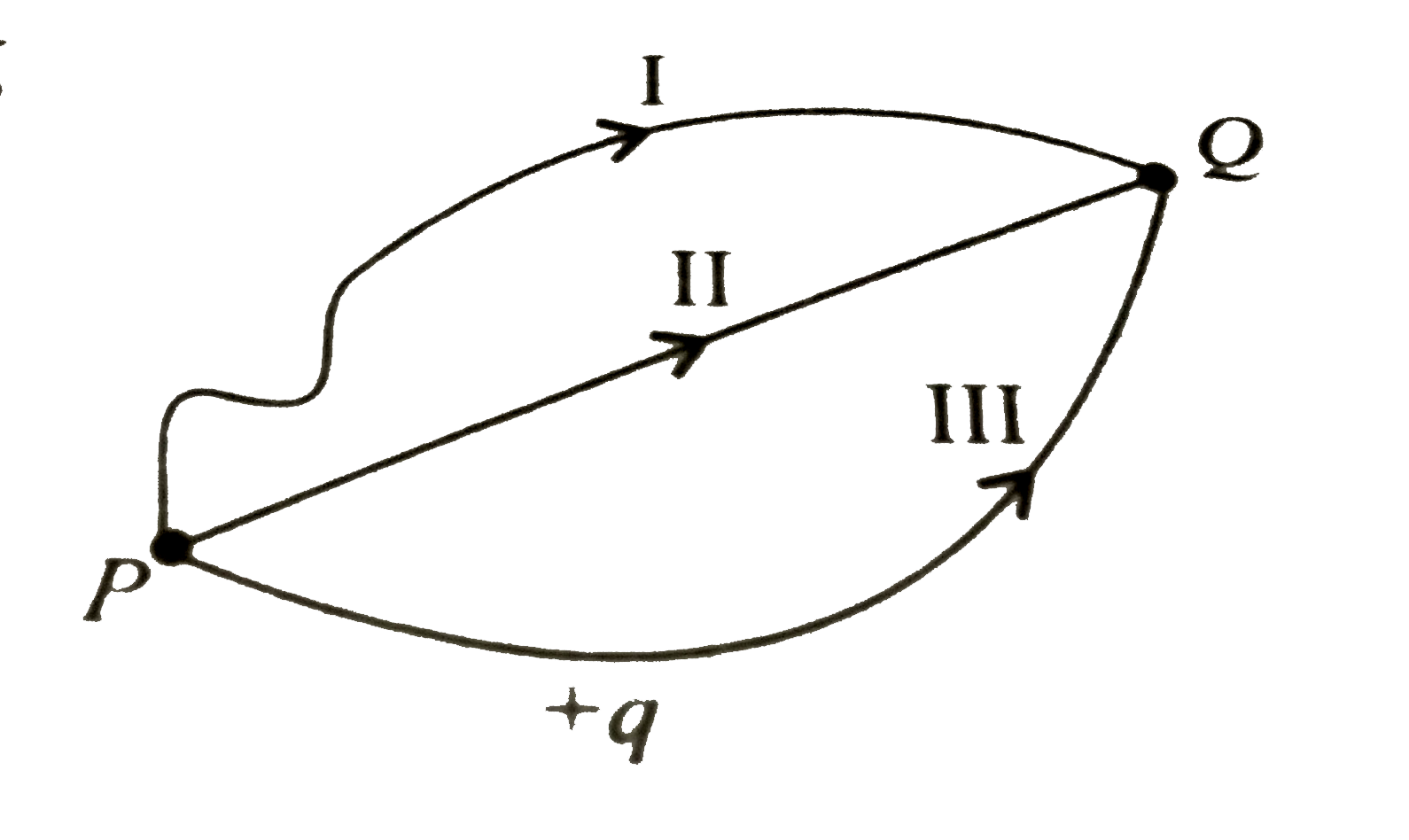Which among the following statements is true about the work done in bringing a unit positive charge from point P to Q in an electrostatic field ?

A
Minimum work is done in case of path II.
B
Maximum work is done in case of path I.
C
Work done is same in all the three paths.
D
Work done is zero in case of path II.
Video Solution
Text Solution
The correct Answer is:C
Work done on a unit charge +q by the electrostatic field due to any given charge configuration is independent of the path, and depends in only on its initial and final positions.
|
Updated on:21/07/2023
Topper's Solved these Questions
- BOOK - NCERT FINGERTPS ENGLISHCHAPTER - ELECTROSTATIC POTENTIAL AND CAPACITANCE EXERCISE - Electrostatics Of Conductors5videos
ELECTROSTATIC POTENTIAL AND CAPACITANCE
- BOOK - NCERT FINGERTPS ENGLISHCHAPTER - ELECTROSTATIC POTENTIAL AND CAPACITANCE EXERCISE - Dielectrics And Polarisation4videos
ELECTROSTATIC POTENTIAL AND CAPACITANCE
- BOOK - NCERT FINGERTPS ENGLISHCHAPTER - ELECTROSTATIC POTENTIAL AND CAPACITANCE EXERCISE - Potential Energy As A System Of Charges4videos
ELECTROSTATIC POTENTIAL AND CAPACITANCE
- BOOK - NCERT FINGERTPS ENGLISHCHAPTER - ELECTROMAGNETIC WAVESEXERCISE - Assertion And Reason15videos
ELECTROMAGNETIC WAVES
- BOOK - NCERT FINGERTPS ENGLISHCHAPTER - MAGNETISM AND MATTER EXERCISE - NCERT Exemplar5videos
MAGNETISM AND MATTER
Similar Questions
Knowledge Check
- Question 1 - Select One
Which of the following statements is not true about electric field lines?
AElectric field lines start from positive charge and end at negative charge.BTwo electric field lines can never cross each other.CElectrostatic field lines do not form any closed loops.DElectric field lines cannot be taken as continuous curve. - Question 2 - Select One
Among the following, which is a true statement ?
AA constructor can have a parameter listBThe constructor is executed automaticallyCThe constructor function can be overloadedDAll the above are true - Question 3 - Select One
The work done to move a unit charge along an equipotential from P to Q
Amust be defined as −Q∫P→E.→dlBis zeroCcan have a non-zero valueDboth (a) and (b)are correct
Which of the following statements is incorrect about electrostatic precipitators ?
View SolutionWhich of the following statements is false when p is true and q is false?
View SolutionGiven that P+Q+R=0. Which of the following statement is true?
View SolutionWhich of the following is true about the charge acquired by p-type semiconductors ?
View Solutionwhich of the following is true about the charge acquired by p- type semiconductors ?
View Solution


 .
.